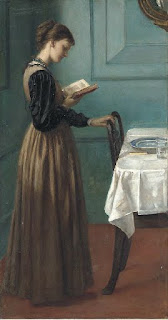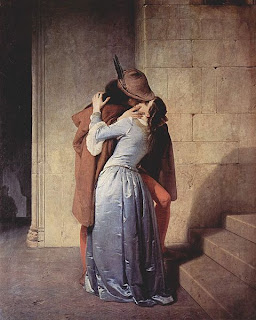 Congratulations to the winner of a signed copy of Stefanie Sloane’s The Devil in Disguise
Congratulations to the winner of a signed copy of Stefanie Sloane’s The Devil in Disguise

 Congratulations to the winner of a signed copy of Stefanie Sloane’s The Devil in Disguise
Congratulations to the winner of a signed copy of Stefanie Sloane’s The Devil in Disguise
 As you know, The Riskies all love a debut author. Today we welcome debut author Stefanie Sloane whose first book, The Devil in Disguise, will be released May 24.
As you know, The Riskies all love a debut author. Today we welcome debut author Stefanie Sloane whose first book, The Devil in Disguise, will be released May 24.
“Captivating… Stefanie Sloane will charm her way into readers’ hearts.” –Susan Wiggs
“Smart, sensuous, and sparkling with wit…. Spectacular.” –Julia Quinn
 But, the only thing worse than the fear of a second rejection would have been the regret I felt over letting myself get in the way of, well, myself. So I finished the book, and the rest, as they say, is history.
But, the only thing worse than the fear of a second rejection would have been the regret I felt over letting myself get in the way of, well, myself. So I finished the book, and the rest, as they say, is history. And I recently turned in the fourth book, tentatively titled, The Saint Who Stole My Heart, to my editor. Fingers crossed that she loves it!
And I recently turned in the fourth book, tentatively titled, The Saint Who Stole My Heart, to my editor. Fingers crossed that she loves it! What if you were asked What is a Romance Novel by someone who doesn’t read romance novels? A relative asked me this question. She’s an educated, well-read person, so I wanted to give her as good an answer as I could.
What if you were asked What is a Romance Novel by someone who doesn’t read romance novels? A relative asked me this question. She’s an educated, well-read person, so I wanted to give her as good an answer as I could.
Romance novels can be incredibly diverse, encompassing history (like me), suspense, elements of women’s fiction, comedy, paranormal, inspirational – you name it. They can also vary by tone from light “romps” to darkly emotional. But what they all have in common is that they are telling the story of a romance. The book is about the romance. The story is the romance–How two people fall in love and find their happily ever after. The happily ever after is essential. A romance is not about doomed romance or tragic romance. It is a celebration of successful romance.
What I mean is, an historical romance is not about the historical events; it is about how two people manage to find love together. Historical events might impact on them, but the story is about their romance. Same with Romantic Suspense- the story is not about—say—a murder mystery. It is about how two people find love together while impacted in some way by a murder mystery.
Because of the focus on two people falling in love, romance novels are basically character focused. And because nobody would read a book about a romance that goes smoothly from first meeting to the wedding day, there has to be conflict. There must be forces driving the couple apart as well as the attraction between them that make them fall in love.
 Romance novels today mostly have strong heroes and heroines. Gone are the victim heroines who must passively be rescued by the hero. Heroines need to act on their own behalf just as much as the hero. Characters must be three dimensional and must act in sensible ways or in ways that are understandably motivated.
Romance novels today mostly have strong heroes and heroines. Gone are the victim heroines who must passively be rescued by the hero. Heroines need to act on their own behalf just as much as the hero. Characters must be three dimensional and must act in sensible ways or in ways that are understandably motivated.
There are some “mostlys” we see in romance novels:
Okay….so, how did I do?

I’m going to reveal a big secret. Until now I’ve never read a Young Adult novel. Nope. Not even the Harry Potter books. Nothing since I was a teenager and then they weren’t called YAs. But M. J. Putney’s publicist sent me her first YA, Dark Mirror, and that book became my first YA.
 We were invited to read her latest book before the meeting and write a synopsis of it for her to read aloud and critique. Only two people attending the workshop actually wrote the synopsis. The first person did it all wrong; she wrote a chapter by chapter outline. I had written a pretty good synopsis and actually received applause, but the joke was on me ultimately. The person who’d written the lousy synopsis was Catherine Asaro, who hit it big in sci fi/fantasy about a year later.
We were invited to read her latest book before the meeting and write a synopsis of it for her to read aloud and critique. Only two people attending the workshop actually wrote the synopsis. The first person did it all wrong; she wrote a chapter by chapter outline. I had written a pretty good synopsis and actually received applause, but the joke was on me ultimately. The person who’d written the lousy synopsis was Catherine Asaro, who hit it big in sci fi/fantasy about a year later.  Mary Jo actually helped me plot The Mysterious Miss M. At one of our WRW Retreats, she gave me some good advice on a couple of plot points, advice I followed.
Mary Jo actually helped me plot The Mysterious Miss M. At one of our WRW Retreats, she gave me some good advice on a couple of plot points, advice I followed. Like Elena, this past weekend I was at a Retreat–Washington Romance Writers Spring Retreat. Not to work, but to be “In the Company of Writers.” We had speeches and workshops and Romance Jeopardy and much conversation. More about that on Thursday at Diane’s Blog.